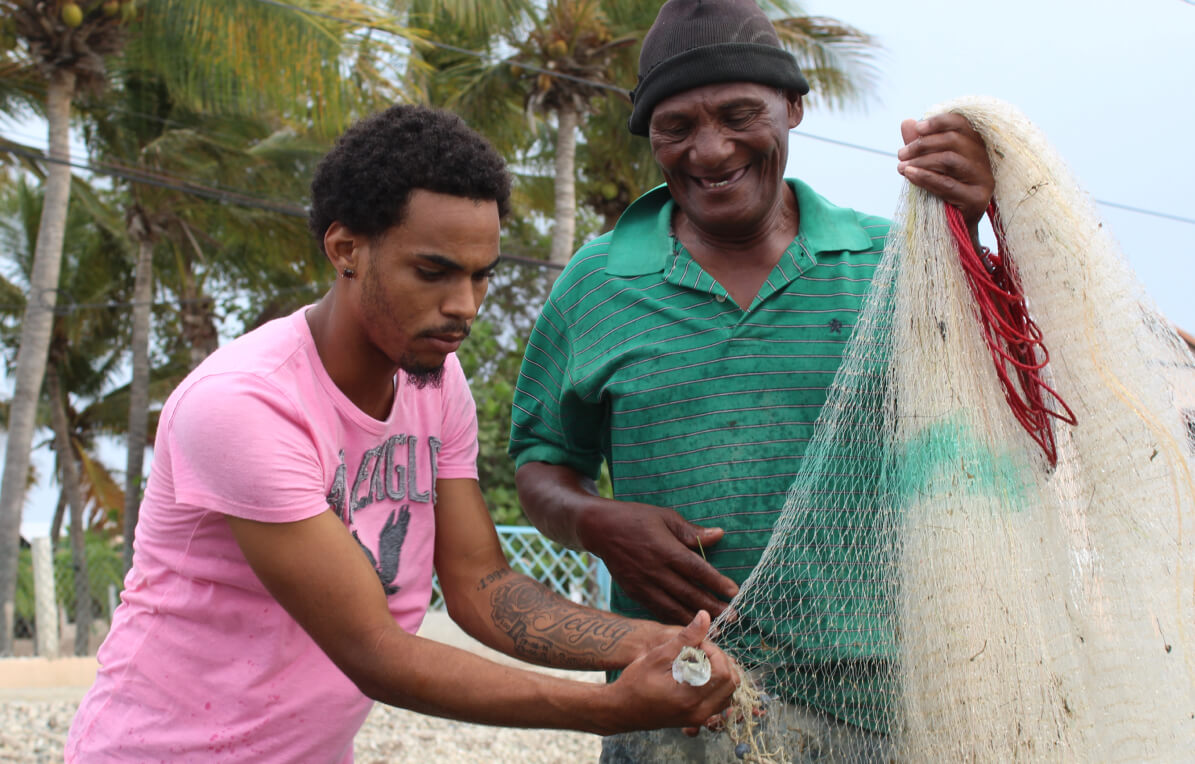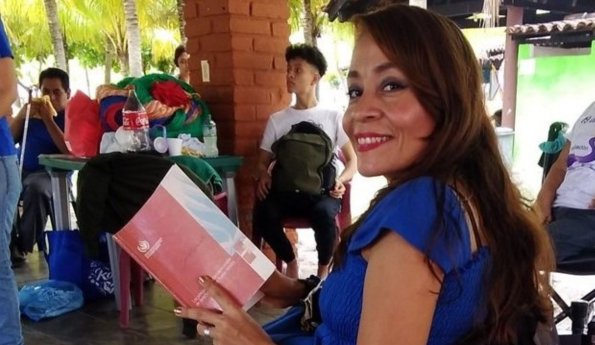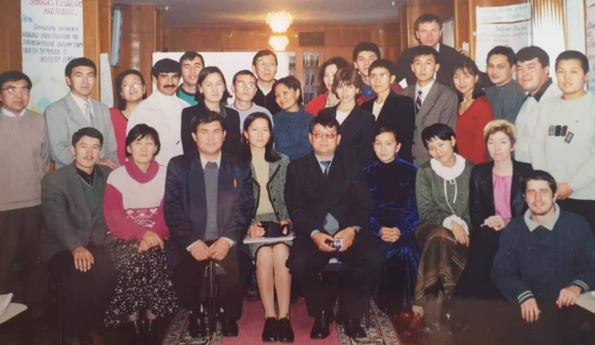Could a human rights defender from Venezuela have emerging good practices that they could share with their counterparts in Egypt? Through a six-year program, Counterpart facilitated the development of regional networks of CSOs that exchanged ideas and developed their own innovative approaches to preserving civic spaces in challenging environments.
Derek Caelin, Innovation and Data Senior Specialist
CSOs in restrictive environments around the world face similar challenges, but they rarely have an opportunity to come together for an open exchange of ideas and resources. In 2014, Counterpart International was awarded a component of the Innovation for Change program (I4C) to network organizations in closing civic spaces and provide peer-to-peer support. Over the past six years, the program provided over 900 organizations around the world with technical capacity (e.g. training; access to a campaign accelerator), innovation labs where organizations and the private sector rapidly prototype solutions for their advocacy initiative, grants dispersed through our “innovation pipeline,” and learning opportunities (e.g. regional retreats for network stakeholders two reflect upon the impact and outcomes of their work). All this emerged from a deeply iterative co-creation process that often felt like we were “building the ship as we sailed it.” The journey has also provided us some valuable lessons learned about the utility and value of a networked approach to supporting civil society.
Innovation for Change: Growing and Sustaining
When it was first conceived, the I4C network marked a departure from the usual international organization/local partner dynamic. Traditionally, international development is highly hierarchical, with donors calling the shots and local partners carrying out their vision. Innovation for Change flips this model on its head, with the regional hubs largely choosing their own focus, objectives, and activities, and international organizations playing a support role. Since the Network’s inception, a “Helper Hub” — consisting of Counterpart International, CIVICUS, and the Tides Center — has backed up regional hub activities and provided innovation, technical, organizational, governance, and sustainability support. In January, Counterpart organized a final farewell and learning event to create space for network members to share with international development practitioners and USAID who want to learn from their achievements in the past year and plan future activities. As we step back from our role in the Helper Hub, we are proud to see we have helped to support a growing, innovative, and increasingly sustainable network.
Increasing Sustainability and Self Reliance
The effort to diversify funding sources and to gather in-kind donations has been present since the outset of the Innovation for Change program. To date, I4C members have garnered more than $220,000 in monetary donations, and received further support of information, data, technology, expertise, space, and logistical support from at least 48 unique companies and organizations.
Both the East Asia Hub and the Africa Hub (through Social Innovations Advisory, Inc. and West Africa Civil Society Institute, respectively) have developed alternative fundraising model guidebooks and collected case studies as learning tools for CSOs who are actively pursuing financial resources domestically and exploring alternative fundraising models. The hubs have also engaged in peer learning, conducting webinars top train members on the different models they can use to generate revenue. In the past several years the hubs have organized at least eighteen workshops and conferences around sustainability.
A Strengthening Network
One of the most important signs that a network is growing is the increasing number of connections between actors. In the case of Innovation for Change, those connections take the form of collaboration and information sharing between regional hubs. We saw those partnerships on display at our recent closeout event. Jennifer Aciko, an Africa Hub Steward for the I4C Global Governance Circle, explained that the Africa Hub has a spot on its board for a member of the MENA Hub based in North Africa. This sort of strategic decision has created opportunities to exchange learning and form partnerships. For example, the Africa hub is currently replicating MENA Hub research on local philanthropy and is developing a sharing economy platform based on one developed in the LAC Hub by RACI. This platform, if successfully adapted to the MENA context could enable exchange of resources in a region hampered by policy restrictions on fintech and crowdfunding.
Formal hub relationships within Innovation for Change network over five years

There are numerous cases of research, technology tools, and advocacy campaigns taking root throughout the network. They demonstrate that the original hypothesis of creating a global peer-community and network could offer something more to the fight against restrictive civic space.
Rajae Boujnah, the MENA Hub manager, has been inspired by activities all over the innovation for change network. They are working with Innpactia in the LAC Hub to create a version of their automated proposal development tool, which enables the user to write the first draft proposals for funding using a clear, concrete set of guided prompts. MENA Hub is also working with the Central Asia Hub, where CSO Porsesh developed an Innovation Index to measure the innovative qualities of an organization. MENA hopes to use the Innovation Index to identify steps they can take to be faster, more creative, and more able to make and carry out innovative decisions. The MENA, Africa, Central Asia, and South Asia Hubs are even collaborating on generating a bid for funding to sustain the hubs and develop a common communications infrastructure.
There are signs of the network deepening its connections to local organizations and actors, not just expanding outward across hubs. During the Networked Innovation event, Africa Hub representatives shared details about their network development strategy. This hub’s strategy reflects the reality that Africa is a region divided by a multitude of political, social, economic, and linguistic contexts. The Hub operates through “regional connectors” – representatives who operate in sub-regional zones. As the Hub grows, its leadership explores launching chapters at a national level, and diversifying their outreach, employing both online and offline methods to ensure that nobody is left out.
In this way, the Innovation for Change network is expanding, both in terms of in-network connections and the number and closeness to civic space defenders on the ground. A larger, more inclusive network.
Expansion Through Innovation
Innovation for Change is a diverse network with regional hubs charging forward on ambitious goals, but network members are unified by a shared interest and commitment to finding innovative ways to address the problems they face every day. For the network, “innovation” is a way of solving problems and a method to bring new members into the network. During the Networked Innovation event, the Central Asia Hub shared why they host innovation events to grow connections across civil society.
One participant, Philipp Reichmuth, reflected on the annual Innovation Festival series hosted by the Central Asia Hub. For years, the Hub sought to move away from facilitating connections among traditional civil society actors. However, given that tension between CSOs who collaborate and form coalitions with government to bring about change and those who do their advocacy work from the outside, organizations were resistant to change. To overcome this, the hub intentionally designed events that required working across silos. For example, the Innovation Festival is an annual event, started in 2009, that brings together cross-generational groups of more than 500 members civil society. Activities like Makeathons challenged engineering students to design products with people with disabilities, or cross-generational exchanges, which bring older civil society organizations together with younger activists, broke down barriers between various groups. These events also generated ideas for Central Asia Hub activities, including planting the seed for the Civil Society Innovation Index which it is preparing to develop as a service for network members, allowing the learnings of Central Asia to help network members systematically improve their capacity for innovation.

The Innovation for Change network was seeded with an eight-year financial commitment from USAID and SIDA, and their vision for a locally-led network with deep and expanding connections in each region and connections globally has taken hold. Six years into that journey, the Hubs have done vital technical work. As Counterpart steps back from the Helper Hub and becomes an ordinary member of the Innovation for Change network, we’re excited to see how the network has grown. I4C members are a part of the Counterpart family, and we look forward to continuing to learn from their success.




